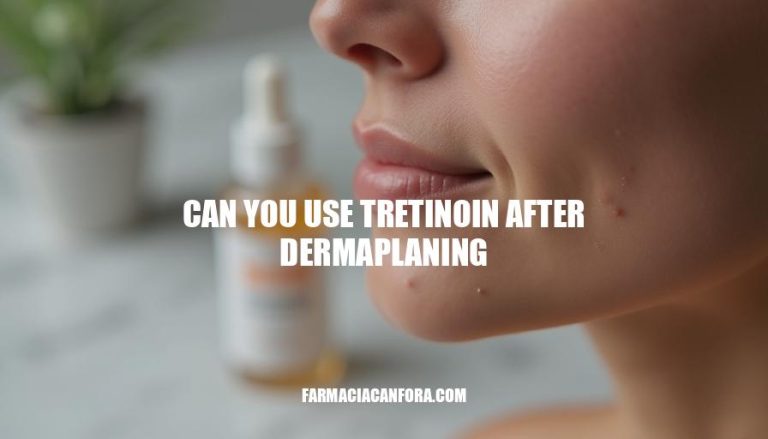


Tretinoin and dermaplaning are two popular skincare techniques that can really help improve your skin. But using them together raises some concerns about how safe and effective they are. So, let’s talk about their compatibility.
Dermaplaning is a gentle way to exfoliate the top layer of your skin, removing dead skin cells and fine hairs.
Tretinoin, on the other hand, is a strong topical retinoid that helps speed up cell turnover and treats various skin issues.
When used together, these two procedures can lead to amazing results if done correctly. But if not done right, it can cause irritation, sensitivity, or even harm your skin. This article will explore whether tretinoin can be safely added to your skincare routine after dermaplaning, and provide tips on how to minimize risks and get the best results while keeping your skin healthy.
Using tretinoin after dermaplaning can amplify the benefits of both treatments. Dermaplaning removes dead skin cells and vellus hair, creating a smooth surface that enhances the absorption of skincare products. Tretinoin, a derivative of vitamin A, promotes skin cell turnover, collagen production, and reduces fine lines and hyperpigmentation.
When combined, tretinoin can further accelerate skin regeneration and improve texture, making the skin appear more radiant and youthful.
However, the risks associated with this combination must be carefully managed. Dermaplaning temporarily compromises the skin barrier, increasing its susceptibility to irritation. Applying tretinoin too soon can exacerbate redness, peeling, and sensitivity, potentially leading to discomfort or adverse reactions.
Overuse of tretinoin on freshly exfoliated skin may also heighten the risk of dryness and inflammation.
To safely integrate tretinoin into post-dermaplaning care routines, precautions are essential. It is recommended to wait at least 48 to 72 hours after dermaplaning before reintroducing tretinoin into your skincare regimen. During this waiting period, focus on hydration and soothing the skin with gentle, non-comedogenic moisturizers.
Avoid other exfoliating agents, harsh cleansers, and direct sun exposure. When resuming tretinoin, start with a lower concentration and gradually increase usage as tolerated. Always apply sunscreen daily to protect the skin from UV damage, as tretinoin increases photosensitivity.
Consulting a dermatologist or skincare professional can provide personalized guidance tailored to your skin type and needs.
1wellwisp.com2hersimplebeauty.com3www.healthline.com4www.reddit.com5cosmediclasermd.com
Using tretinoin after dermaplaning can be safe if done correctly, but it’s essential to manage the risks associated with this combination.
Dermoplaning temporarily compromises the skin barrier, making it more susceptible to irritation when applying tretinoin too soon. To safely integrate tretinoin into post-dermaplaning care routines, wait at least 48 to 72 hours after dermaplaning before reintroducing tretinoin.
During this waiting period, focus on hydration and soothing the skin with gentle moisturizers, avoiding other exfoliating agents, harsh cleansers, and direct sun exposure. When resuming tretinoin, start with a lower concentration and gradually increase usage as tolerated.
Always apply sunscreen daily to protect the skin from UV damage.
Consulting a dermatologist or skincare professional can provide personalized guidance tailored to your skin type and needs. They can help you create a customized plan to minimize risks and maximize benefits while keeping your skin healthy.